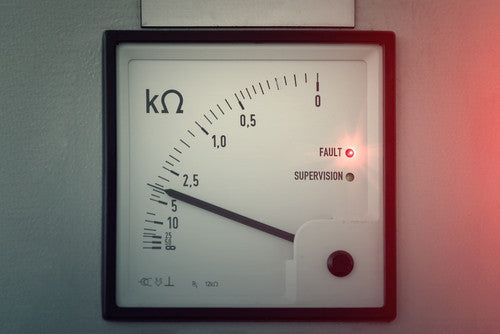- Continue Shopping
- Your Cart is Empty

Understanding Speaker Impedance: What are OHMs?
It’s not uncommon for the lack of knowledge surrounding ‘speaker impedance’ to cause confusion- and occasionally blown power amplifiers- to those new to the world of speaker technology. Speaker Impedance may very well be the most complex and misunderstood speaker specification. Thankfully, understanding speaker impedance and OHMs is actually fairly simple when these terms are broken down and explained correctly. Read on to begin understanding speaker impedance and what OHMs actually are.
What is Speaker Impedance?
Impede means to restrict or hinder. ‘Speaker Impedance’ is the unique electrical properties of your speaker that restricts, or impedes, the flow of power from your receiver or amplifier to your speaker. Speaker Impedance is a term that’s used to express how hard it is to drive a speaker and to show the speaker’s compatibility with different receivers or amplifiers. Speaker Impedance is usually expressed by, or measured using, OHMs. OHMs is a meaningful and helpful term for speaker specification and unit of measurement and when used and understood correctly by manufacturers and consumers.
What are OHMs?
‘OHM’ is a unit of measurement used to show speaker impedance or resistance. The lower a speaker’s impedance, or OHMs, the easier it will be for an amplifier to successfully supply power to it. Speakers generally have an impedance rating of 4, 8 or 16 OHMs.
OHM’s Law and Visually Understanding Speaker Impedance and OHMs
The best way to visually understand speaker impedance and OHMs is with water. Some explain the science of speaker impedance with water piping and water. Here, we are going to explain and simplify what speaker impedance is by visualizing water and a water hose.
When you hook up a water hose to a water spigot and turn on the water, water will soon begin to stream through the hose. With a speaker, the water is much like an electrical current streaming through the coil. This electrical current in a speaker is measured by amps. Now, place your thumb over the end of the water hose and notice how the water pressure is still the same but you’re now restricting the flow with your thumb. The scientific properties that restrict the flow of the electrical current through the wiring of the speaker are said to ‘impede’ the flow of electricity. Lowering the impedance (or resistance) is like slightly removing your thumb from the end of the water hose, or opening the nozzle on a spray nozzle attached to the water hose, to allow more flow. Raising the impedance (or resistance) would happen the more you covered the end of the water hose and restricted the flow.
The science behind impedance was discovered by a man named George Simon Ohm many years ago, hence the name ‘Ohm’s law’ and OHMs (the unit of measurement). The concept of this simple formula has become exceptionally prominent in the fields of both electricity and technology.






Modern Speakers
Author